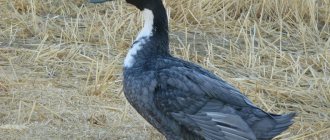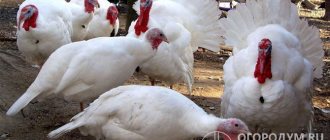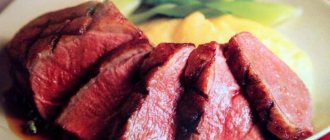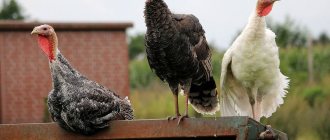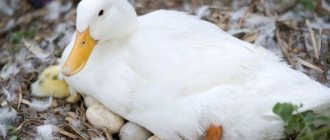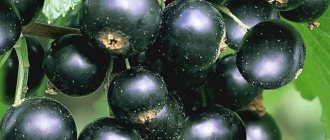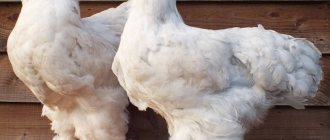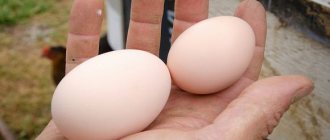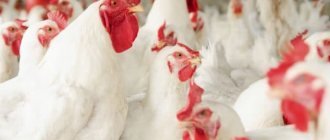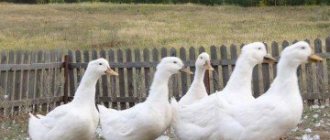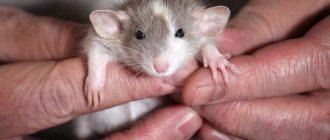Mularda ducks have become extremely popular throughout the world in recent decades. These birds are equally convenient for growing on a private farm and in a large enterprise, and in terms of productivity and quality of meat they have practically no rivals among modern varieties of domestic ducks.
Mulardy ducks (pictured) are unpretentious and well adapted to various living conditions
Domestic homestead owners are happy to take such pets for themselves. Today we decided to introduce readers in detail to “mulards”, their economic characteristics and specific content.
Description of the breed
Ducks of the Mulard breed were created in France by crossing the Peking breed and the Indo duck. Instead of Peking duck, white allier, orlingon or Rouen duck are sometimes used. These are the best breeds, thanks to which a hybrid has been obtained with improved meat characteristics and rapid weight gain.
However, these ducks have one drawback - they do not give birth , so they are not kept for eggs and are not bred at home.
Mulards are very noticeable in the poultry yard because they have an unusual appearance:
- densely built, large, elongated body;
- on the small head there are dark eyes and an elongated light beak;
- rather long neck;
- wings tightly fitting to the body;
- moderately developed small tail;
- yellow short legs.
The main distinguishing feature of the breed is its unusual color . The entire body is usually covered with white plumage, and there is a large dark spot on the head, tail or back.
Mulards are distinguished by their cleanliness and calm character. They got this quality from the Indian duck. The hybrid is not loud, not fussy and does not run away from the yard. It grows quickly, gains weight and can live without bodies of water. Therefore, Mulard meat does not have a specific smell .
We also recommend reading:
Don't feed the ducks - they're still flying... Keeping ducks in winter. Keeping an Indian duck at home Gray duck: description of the bird, reproduction, nutrition Duck breeds for home breeding
Performance
Since Mularda ducks do not lay eggs, they are raised only for meat.
By the age of four months they can reach six or more kilograms of weight. The female weighs less than the male, but only by half a kilogram. These indicators are very good for meat production. By the age of two months, the bird gains a slaughter weight of 3.5-4 kg. If the fattening of individuals is correct, then in two months they can weigh more than 4 kg, and the meat will not be fatty . It is recommended to slaughter animals at 60 and 90 days of age. Between these periods, the young animals begin to molt, so it is better not to touch the birds.
Don't forget about the delicious liver that you can get from Mularda. The liver weighs about 550 grams and is valued for its taste almost like goose liver. For all these qualities, this hybrid is sometimes called “duck goose”.
It is not profitable to keep this breed at home for more than three months. By this age, ducklings have already reached slaughter weight, and offspring cannot be expected from them. If you keep a flock in cages, the bird gains slaughter weight by the age of one and a half months. But in this case, the meat will turn out fatty, since the ducks in the cages practically do not move.
Duck Mulard
Diseases and their treatment
Mulards are considered one of the most persistent and viable interspecific hybrids of ducks. They are able to tolerate sudden temperature changes and rarely suffer from vitamin deficiency.
Even with intensive feeding methods, birds almost never become obese. The only danger for mulards is high air humidity; if they remain in such conditions for a long time, they often suffer from respiratory diseases and develop slowly.
Among the diseases in ducks of this breed are the following:
- Aspergillosis . A fungal infection that occurs when birds are not properly cared for. Infection usually occurs through food or bedding. The disease can be identified by rapid weight loss, lethargy, and loss of appetite. In later stages, ducks develop paralysis and discharge from the beak. Copper sulfate and Nystatin are prescribed as treatment.
- Feather pecking . Appears due to increased crowding or lack of protein in the feed. Birds begin to frequently clean their feathers and peck them all over their bodies. The problem can be easily solved by correcting the care and expanding the poultry house, and observing feeding standards.
- Cloacite . This is an inflammation of the cloaca, which usually develops due to a lack of vitamins in food or an infection in the body. The disease can be identified by characteristic purulent discharge in the anus, which causes severe discomfort to ducks. As part of treatment, treatment of the cloaca with zinc ointment or a weak iodine solution is prescribed.
Like other domestic ducks, routine vaccination is required to prevent diseases and epidemics on the farm. It is always carried out in several steps, starting from 5 days of age of ducklings.
It consists of vaccines, vitamins and antibiotics. The procedure should only be carried out by a qualified veterinarian in order to comply with all sanitary standards.
Advantages of the Mulard duck breed
Every year the breed is gaining popularity and more and more farmers keep Mulards at home. This is explained by the numerous advantages of the hybrid. These include:
- Stable and fast weight gain.
- High resistance to diseases.
- Calm character.
- Cleanliness.
- Low feed consumption and omnivorous birds.
- Rapid adaptation to climate change.
- Unpretentiousness to living conditions.
- High productivity.
- For industrial cultivation, the possibility of using down and feathers.
- Relatively high egg production of adult birds.
- Low fat content in meat.
- Delicious and valuable liver.
- No specific smell of meat.
- Strong skeleton and developed muscles.
The only disadvantage of the breed is that Mulards do not reproduce. But farmers solve this problem in a different way.
Building a shed for a hybrid
The poultry house in which the mulards will live must be dry, illuminated, ventilated, but without drafts. You can adapt an existing barn into a poultry house; to do this, you need to fill in the cracks and eliminate dampness and mold.
If you don't have a barn, you'll have to build a bird house from scratch. The building is made of wood. The floor should be 40-50 cm from the soil surface, it is thinly coated with slaked lime, and straw is laid on top. The entrance with a door and a lift is made on the south side. The roof should be sloped to prevent rain moisture from getting inside. It is advisable to provide natural lighting; with it, mulard ducks grow more actively, but artificial lighting can also be used.
Expert opinion
Zarechny Maxim Valerievich
Agronomist with 12 years of experience. Our best country expert.
Ask a Question
A pen is attached to the poultry house. It is advisable that there is a natural pond nearby in which the ducks will swim and nibble algae. But if there is no reservoir, the mulards do not suffer from its absence.
Breeding Mulards at home
Poultry farmers are successfully breeding the hybrid on their backyard farms. To do this, they cross adult birds of the Peking and Muscat breeds. In order to obtain good and high-quality offspring during the breeding process, it is necessary to fulfill certain conditions:
- The best mating season is mid-spring and early summer.
- Select high-quality individuals that have reached 7-10 months of life.
- During breeding, the bird must be well cared for. It is best to separate an active drake and 4-6 females of the desired breeds.
- At the first stage, the birds will adapt, so fertilization of the eggs does not occur immediately.
- Sometimes a black and white male may refuse to cover white ducks. In this case, the backs of the females are repainted black.
- Eggs for incubation are collected over seven days.
Ducklings can be hatched in an incubator or under a hen .
In the latter case, the offspring will appear after a longer period of time than in the incubator. A nest is set up for the hen, using an old box or fencing off a corner in the poultry house in a quiet place. The bottom of the nest is covered with hay or straw. From 15 to 20 eggs are placed under the duck. The hen should sit on the eggs so that they are completely covered with feathers.
After 10 days, the fertilization of the eggs is checked. An ovoscope is used for this. Light-colored eggs without blood vessels are removed. If the embryo is frozen, a blood ring will be visible. Such eggs should also be removed.
There should always be food and water near the nest, since the hen must eat, drink and bathe several times a day. Thanks to her wet feathers, the eggs are moistened. In the incubator they should be irrigated with water.
Ducklings should be born in 30-31 days . More than 80% of the offspring usually hatch from eggs hatched under a hen. Approximately 60% of ducklings hatch in the incubator. A good hen, who has already gained experience, is left for further breeding of Mulards at home.
Egg incubation
Only fresh eggs without damage or defects to the shell are suitable for incubation. Before placing in the incubator, the shells must be thoroughly cleaned of dirt.
Incubation mode table
| Incubation period, days | Temperature, °C | Air humidity, % | Cooling |
| From 1 to 3 | 37.6 | ≈75 | Not required |
| From 4 to 7 | 37.4 | ≈75 | Not required |
| From 8 to 16 | 37.4 | ≈62 | Not required |
| 17 | 37.3 | ≈62 | Not required |
| From 18 to 21 | 37.3 | ≈55 | Open the door and wet the eggs with warm water |
| From 22 to 24 | 37.2 | ≈75 in the morning, 85 in the afternoon | Open the door and wet the eggs with warm water |
| From 25 to 28 | 37.1 | ≈85 | Open the door and wet the eggs with warm water |
Features of cultivation
For good growth and development of ducklings born, the following conditions are created:
- In the first week of life, the air temperature for keeping young animals should be within 23-28 degrees. 24-hour lighting is also required. They should be kept on a bedding of shavings, hay or straw. Sawdust cannot be used because ducklings will eat it. To prevent bacteria from multiplying, bedding material is mixed with fluff lime.
- From the third week of life, the temperature gradually decreases to 18-20 degrees.
- In the summer, already in the first days of life, ducklings should be taken out for walking. Each bird needs one square meter of walking yard.
Organization of the place
A spacious enclosure is suitable for raising mulards, as well as Indian ducks. Its area corresponds to the proportion of one m² per three birds. Set aside a place in the poultry house for a pond - they don’t need a lot of water, but bathing is required. Also provide a place for ducks to walk.
Provide the bird enclosure with a ventilation and heating system. The optimal temperature for ducks is on average 20-22 degrees, near heat sources: 25-30 degrees.
Place a bedding of sawdust, hay, or dry grass on the floor. Thickness is about 15 cm. The material is easy to purchase in specialized stores or on farms.
Since the feet of mulard ducks are almost always wet with water, it is recommended to remove the contaminated layer of bedding. Otherwise, harmful insects and parasites will appear on the surface, which will harm the health and life of the birds.
Avoid drafts, but ventilate the house regularly.
Such care is the key to active weight gain of ducks, their health and the success of your business.
What to feed ducks at home
Beginning poultry keepers often ask, “What do ducks eat?” You can immediately answer that these birds are unpretentious when it comes to food .
Despite the fact that Mulards are hybrids, they eat the same things as ordinary domestic ducks. Newly born ducklings do not know how to feed themselves, so in the first hours of life the babies should be given a weak solution of potassium permanganate from a pipette. Later they are fed a mixture of boiled eggs and porridge. It can be poured directly onto the chicks or onto dark paper. Sometimes you have to force them to drink and feed them. The ducklings will begin to feed on their own in a day or two.
Diet for the first days of life:
- The first three days - porridge with a boiled egg.
- On the third day, chopped greens (nettle, grass) are added.
- After a week, low-fat cottage cheese and sour milk are introduced into the diet.
- On the tenth day of life, boiled potatoes are added.
- From the second week, ducklings can be fed any type of duckweed.
Until the age of one month, babies are fed four times a day .
At this time, the body is actively growing, so nutrition should be balanced. Subsequently, the young animals are transferred to three meals a day, and later to two meals a day. The diet of young birds must include:
- vegetable and animal proteins;
- vegetable products, root vegetables;
- chopped or broken boiled potatoes;
- greenery;
- corn;
- wheat;
- yeast (1 g per day per bird);
- bran;
- vitamins;
- minerals.
Be sure to add duckweed to the mixture, which accelerates the growth of birds.
Ducklings should be fed boiled beets with caution, as they weaken them. Meal, meat and bone meal, eggshells, lime, and shells will help saturate the young body with minerals and vitamins.
For good digestion of food, birds need gravel , which is scattered on the ground.
It is necessary to monitor the drinking bowls, which should always be clean and filled with fresh water. Ducks love to drink and rinse their nostrils after eating.
Diet
The taste characteristics of birds directly depend on what they consumed during life. This breed of duck requires that their menu consist of a variety of high quality foods. This includes many valuable components.
Compound feed is purchased at specialized points. It forms the basis of nutrition for mulards. A mixture is added to it, which includes the following types of products:
- Plant food: crushed alfalfa, nettle, clover, duckweed and other herbs. The exception is poisonous plants.
- Boiled chopped vegetables: carrots, pumpkin, cabbage, beets, and potatoes.
- Fish and meat waste. They are given with caution and as little as possible.
- Cereals: corn, barley, and legumes.
- Cake raw materials from rapeseed, rice, cotton and soybeans.
- Fish flour.
- Dairy products. They are essential for feeding ducklings. Sometimes they are included when feeding mulards at the age of several months.
Spoiled foods are taboo for ducks because they cause poisoning.
Birds not only eat a lot, but also drink a lot. Don't forget to regularly change clean fresh water.
The feeding frequency of ducks in the summer months increases up to four times a day. During this period, dry feed is alternated with mash, including more greens in the diet.
Preparation for slaughter
Mulards that have reached sixty days of age are prepared for slaughter. By this time they should weigh more than 3.5 kg. Before slaughter, birds are not fed for 4-6 hours and given very little water.
To obtain high-quality fatty liver, in recent days the ducks are kept in cramped cages and force-fed. During this time, the liver increases in size and by the time of slaughter weighs more than 500 grams. Birds stop feeding 10-12 hours before slaughter.
Ducks are slaughtered in sanitary conditions, making sure that the bird is clean beforehand. To facilitate plucking, the carcass is doused with water at a temperature of 70 degrees. If you pour boiling water over it, the carcass will lose its presentation, and after pouring cool water over it, you won’t be able to remove the feathers properly.
Mulard meat turns out to be well digestible, satisfying and tasty. It contains only 20% fat, so it is considered a dietary product . The meat of hybrid ducks contains macro- and microelements, vitamins K, E, C, A and group B.
Business
When drawing up a farm business plan, the following factors should be taken into account:
- the cost of building a poultry house of the required area;
- feed price;
- the period during which ducklings grow (2-3 months);
- associated costs (transportation, heating, lighting, veterinary examination permit, etc.).
The payback period for small farms ranges from 1-1.5 years and depends on the size of the livestock. Most owners, taking into account the advantages of the breed, raise Mulards for meat or liver. Sales points (restaurants, markets) need to be found in advance.
Reviews from poultry farmers
Since we live in a private house with a large plot, we decided to start a household and get ducks. After consulting with experienced poultry farmers, we chose Mulard ducks. This hybrid turned out to be a super bird! They eat everything, even grass, and grow very quickly. We keep them for up to three to four months, after which they begin to gain fat. We got carcasses in pure form up to 5.5 kg.
I really like the fact that the enclosure is always dry. This is because ducks only use water for drinking. They don't bathe completely. They only dip the head and clean the feathers. Mulards are very quiet and only make quacking noises. You won't hear any loud screams from them. With a lack of vitamins, they begin to pluck each other's feathers. If the meat of ordinary ducks has a specific taste, then the meat of Mulards is very tasty. You can bake, fry, stew, cook soup.
Victoria, Russia
We have been breeding ducks for many years. We don’t get so much meat from them anymore, since in ordinary breeds it is fatty. A couple of Mulards came to us by accident. At first, I didn’t notice much difference between birds of different breeds. But when the new couple grew up, they could immediately be distinguished from other birds. They are half the size of other ducks, have short legs and a long, powerful beak. And Mulards weigh twice as much as regular breeds. Maintaining them is not troublesome and profitable.
Anna, Russia
We live in a private house, but our plot is very small.
But there is a small barn in which we decided to keep ducks. Friends recommended the Mulards, who are growing quickly. We took them in the summer, and already in the winter our children ate delicious meat that did not smell like duck at all. I advise everyone to get this breed. The birds are unpretentious, grow quickly and are not very loud. I fed them only in the morning and evening. The main thing is that they always have water. Friends themselves breed such ducks by crossing an ordinary drake and a Muscat duck. They say it is very profitable. Yuri, Russia
